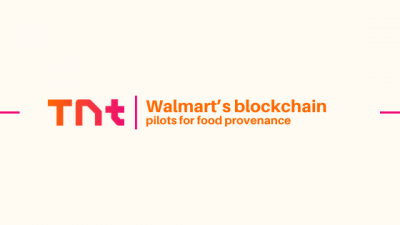eCommerce and mCommerce are the two different ways in which businesses are selling products and providing online product support. eCommerce refers to buying and selling through a website, while mCommerce focuses more on transactions made using mobile devices. Knowing the difference between these two allows you to make the right strategy to reach more customers and sales.
This post will explain what eCommerce and mCommerce are and what is the major difference between them, with the attached advantages of each.
Why Businesses Should Understand the Difference
Understanding the difference between the two, eCommerce and mCommerce, helps you to make a better decision on how to reach more customers and increase sales. eCommerce works through the website on a computer and offers details on the product with the support of multiple payment methods. On the other hand, mCommerce focuses on mobile devices that allow customers to shop wirelessly and complete transactions quickly.
With a clear approach to meet the needs of customers and improve engagement. This further allows for boosting sales and allows for making a greater impact on the marketing efforts. It helps to plan the use of resources more wisely and provides a smoother shopping experience while leading to better customer satisfaction and growth.
What is eCommerce?
eCommerce basically refers to electronic commerce. It includes the buying and selling of the product through websites. Businesses use an eCommerce platform to highlight their products, manage orders, and accept online payments. It allows companies to reach a wider audience without the limitation of having a physical store.
Generally, all the eCommerce activities are performed with the help of desktops and laptops so that the user can have a clear look before making any decision with secure payments. Businesses also rely on the eCommerce development services to develop a reliable online store and improve the shopping experience.
Advantages of eCommerce
- Give support to have a wider reach of audience and sell more, with limitations as per the location.
- Cost less in comparison with running the online store and also saves costs for maintaining the physical store.
- Make your services available all the time for the customers and maintain smooth browsing.
- eCommerce platform provides access to customer data and analytics to increase sales.
- Allow for more payment options to maintain smooth transactions.
Disadvantages of eCommerce
- Can increase the chances of a cyberattack on the customer data.
- Need support of technology and a stable connection for the technical setups.
- Challenging to stay stronger in the competitive market and get noticed globally.
- Handling the customer data and payment details requires following strong security measures.
- Extra charges for delivery and transportation services, and the impact on the delayed deliveries.
What is mCommerce?
mCommerce is the process of buying and selling online with mobile devices and making business transactions anywhere with better connectivity. It allows customers to make purchases online, track orders, and access services directly while making use of mobile devices. This makes the shopping more convenient and immediate.
Advantages of mCommerce
- With mCommerce, customers can shop anytime from anywhere while making use of their mobile devices only.
- Give support for faster transactions with the optimized websites and mobile apps that allow for quick checkouts.
- Improve the user experience with push notifications, along with instant updates and product promotions.
- Supported mobile features of location tracking and personalized shopping experience improve the customer experience and enhance engagement.
Disadvantages of mCommerce
- The limited display size will affect the overall product presentation and browsing experience.
- Raise the concern of security for the mobile transaction and to protect the customer data.
- Keep requiring additional features and resources to maintain a strong appearance on mobile devices.
- Maintaining the app and website compatibility on all device types and screens is the concern.
eCommerce and mCommerce: Comparison Table
Here is a quick comparison of eCommerce and mCommerce so that you can have more clarity.
| Feature | E-Commerce | M-Commerce |
| Definition | It is about buying and selling products or services through websites on a computer or a laptop. | It is buying and selling products or services by making use of mobile devices. |
| Device Access | Desktop and laptop computers. | Smartphones and tablets. |
| Customer Convenience | Accessible from anywhere with a computer and strong internet. | Accessible anywhere and anytime with mobile devices. |
| Transaction Speed | Generally, it requires following longer checkout steps. | Supports smooth and faster checkout with the option to save card details. |
| User Experience | Support the clear display of the product with the addition of detailed product information. | App and site are mobile-optimized to improve the usability for all screen sizes and support smooth browsing. |
| Engagement Tools | Effectively support email marketing and website promotions. | Give the instant push notifications, location-based offers, and app notifications. |
| Security | Requires secure websites and payment gateways. | Requires mobile-specific security for apps and transactions. |
| Cost for Business | It has a lower cost of setup but it is less focused towards mobile users. | Additional costs for app development, maintenance, and optimization as per the market trends. |
| Reach | Broader for desktop users; international reach possible. | High engagement with mobile-first customers, and can target local and mobile users effectively. |
| Best For | Products that need detailed descriptions, complex purchases, or desktop browsing. | Quick purchases, repeat orders, mobile-focused audience, instant promotions. |
Major Differences Between eCommerce and mCommerce
When understanding the difference between eCommerce and mCommerce, it is important that you know which one is more suitable for your business and allows you to reach a wider customer base.
While mCommerce and eCommerce both support online transactions. But still, eCommerce and mCommerce differ from each other in some important ways that affect how your business operates and engages with customers.
-
Device Usage and Accessibility
eCommerce focuses on using the website or application on PCs and laptops, which is ideal for customers who want extensive browsing. And mCommerce is designed for mobile devices, allowing customers to shop at any time and from anywhere.
-
Payment Options and Transaction Speed
An eCommerce platform provides support for multiple payment methods, but it may require following longer checkout processes. mCommerce puts more emphasis on faster transactions with features like one-click payments, digital wallets, and card payments to support a better shopping experience.
-
Customer Engagement and Personalization
eCommerce is more of a traditional marketing option, which includes email campaigns and website promotion. mCommerce takes advantage of mobile-specific tools like push notifications, location-based offers, and personalized recommendations to improve engagement.
-
Business Reach and Market Opportunities
eCommerce allows businesses to reach a global audience, specifically desktop users. If your product demands a full description and comparison, this is your best option. mCommerce targets the mobile-first devices, which makes it effective for quicker purchases and repeated orders.
Understanding these key differences allows you to determine how to balance both to maximize consumer reach and sales.
Creating a Unique Approach for Online Selling
eCommerce and mCommerce have impacted how businesses interact with their customers. eCommerce provides an organized and detailed shopping experience. On the other hand, mCommerce provides flexibility with immediate access to all mobile users.
If you are among the businesses that want to remain competitive, then you can use both methods to have a stronger digital presence. A well-optimized website supported by a mobile-friendly platform allows you to maintain a higher reach while also improving engagement and conversion rates.
Partnering with an experienced mobile app development company can help you have a strong, secure, and scalable solution that is specific to business goals. With the right technical support, you can effectively use eCommerce and mCommerce to improve customer experience and maintain consistent growth.
Information contained on this page is provided by an independent third-party content provider. Binary News Network and this Site make no warranties or representations in connection therewith. If you are affiliated with this page and would like it removed please contact [email protected]



Comments